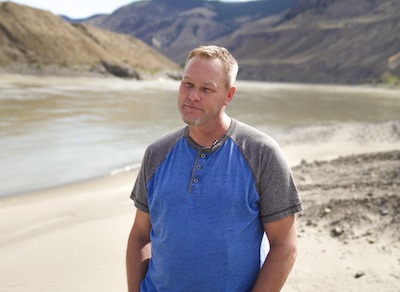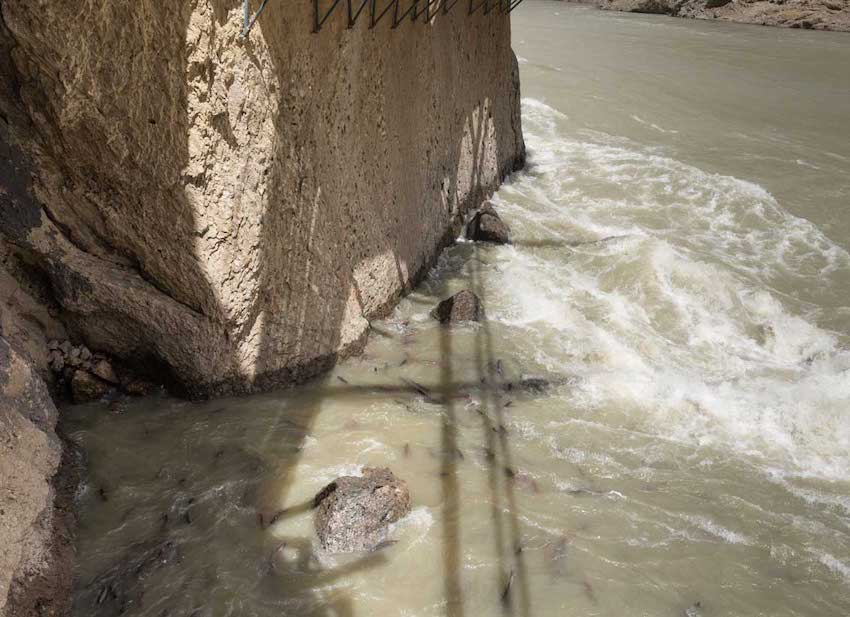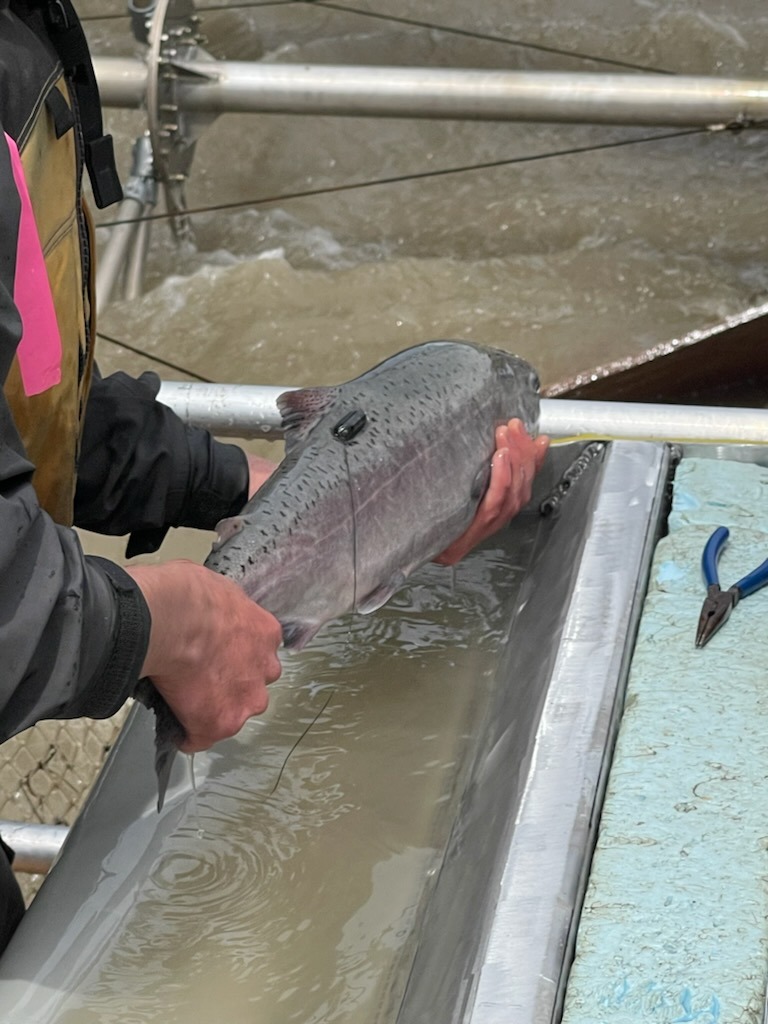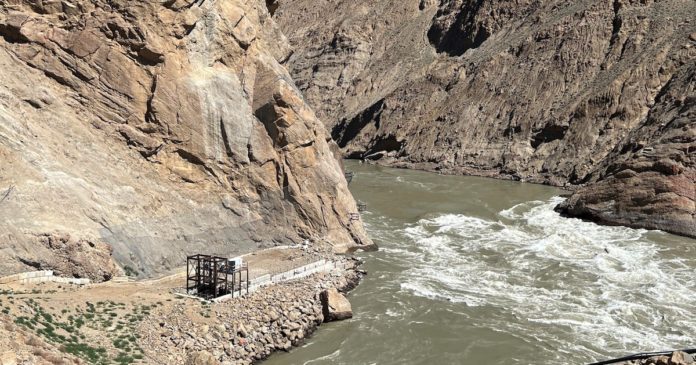Sockeye and other salmon species are now making their way past the location of the massive rockslide at Big Bar, near Lillooet, at a rate of 39,000 fish per day. This is according to federal, provincial, and First Nations experts who recently provided a major media technical update on the progress of fish passage at Big Bar. This tri-lateral response team has been in charge of rock removal, fish transport past the slide by land and air, slope stabilization, fishery passage construction, and fish tagging and monitoring since the massive recovery effort began 3 years ago.
As a result of the work so far, some 280,000 salmon—made up of 235,000 sockeye and 45,000 Chinook—have already passed the monitoring station located approximately 40 km above the slide site this year. Tagging downriver of the slide, followed by tag monitoring at Big Bar and above the site, reveals they have been able to swim, virtually unimpeded, past the 110,000 cubic meters of rock that was estimated to have fallen off the canyon’s western slope in late 2018.
Because of the remoteness of the site, the disaster was not discovered until June 2019 after reports that salmon were unable to swim over or through the turbulent waters created by the massive 5-meter-high rock barrier and were stacking up below the slide by the thousands.
This event posed the most significant impediment to Fraser River salmon migration since the 1914 Hell’s Gate Slide and prompted an “all hands on deck” call to prevent a disaster from befalling salmon runs that spawn above the slide site. Hell’s Gate was caused by CNR railway construction, while Big Bar was a natural event.
Innovative Solutions to Save Salmon


According to comments by Department of Fisheries and Oceans’ (DFO) Gwil Roberts, Director, Big Bar Landslide Response, and Dale Michie, the lead DFO spokesman and biological manager, a decision was made not to install a traditional fish ladder because of the site’s technical challenges. Instead, a natural fish passageway with resting pools was created along the west wall using rock removed from the blockage.
They also reported that higher water in the river has been advantageous for Chinook and sockeye passing Big Bar, however early Stuart sockeye and some spring run age 5 Chinook stocks were temporarily delayed at Hell’s Gate due to this year’s rapid snow melt. To mitigate a potential delayed fish arrival problem, they put in place fish wheel traps, fish transportation systems, and improved stress reduction fish handling protocols prior to salmon arriving at Big Bar.

Monitoring and collecting fish condition data is playing a much bigger role at Big Bar relative to previous years where the primary focus was to get as many salmon above the blockage as possible. For example, this year telemetric tags were attached to salmon at a capture site near Matsqui on the lower Fraser River. These fish were transported upriver and released below the slide. Then the tags were read as they passed through the slide site, recording how much energy each salmon used during passage. Other work is being done to assess flow characteristics under different flow rates at Big Bar. So far many more tagged fish have been recorded compared to previous years. This data will provide valuable information for developing effective strategic planning at Big Bar, and for other similar events that might occur in the future.

This news has been positively received by First Nations within the Upper Fraser system, according to Gord Sterritt, Executive Director of the Upper Fraser River Fisheries Conservation Alliance.

However, Sterritt and Greg Whitsky, Big Bar’s operations manager, expressed concerns that the 2019/2020 damage done to salmon returns above Big Bar will result in very low escapements in 2023/2024.
Roberts also noted that debris removal was conducted between January and April in 2020 and 2021.

Further removals in the winter of 2022/23 will depend upon fish passage success this year. He also cautioned that factors other than Big Bar, such as variable ocean temperatures and 2021’s significant Fraser River floods, are affecting general salmon recovery, and that the final report card for fish passage cannot be issued until all escapement counts are taken.






